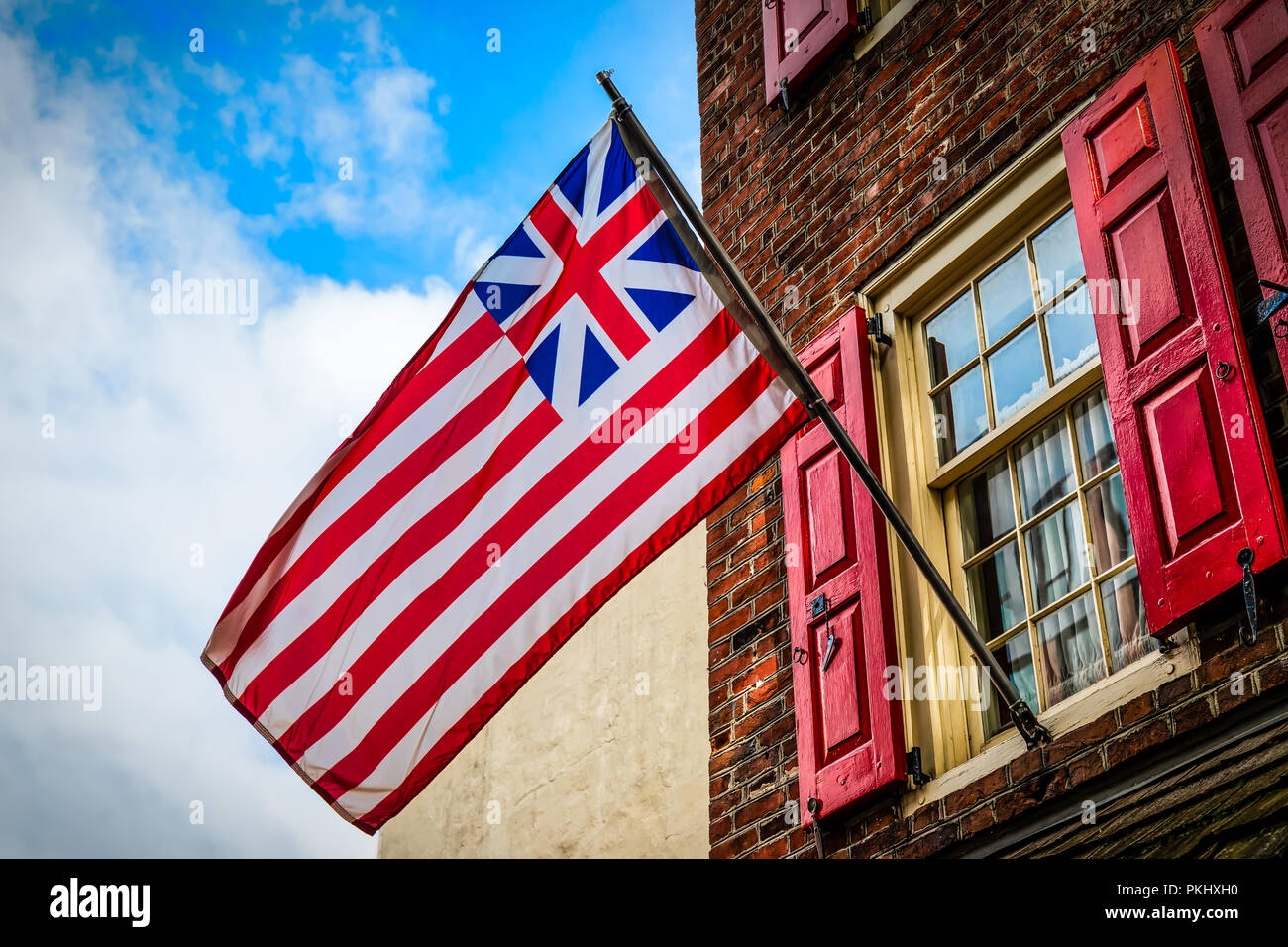The Continental Colors Flag, also known as the Grand Union Flag, is considered one of the first flags used by the United States. It features thirteen alternating red and white stripes, representing the original thirteen colonies, with the British Union Jack in the canton. This flag was used during the American Revolutionary War as a symbol of the united colonies.
While the Continental Colors Flag is not as well-known as the current American flag, it holds historical significance as a precursor to the Stars and Stripes. The flag was first raised on January 1, 1776, by General George Washington at his headquarters in Cambridge, Massachusetts.
History of the Continental Colors Flag
The design of the Continental Colors Flag was based on the British Red Ensign, with the addition of white stripes to represent the colonies. The flag was flown by American ships and militias during the early stages of the Revolutionary War to symbolize unity and defiance against British rule.
Over time, the Continental Colors Flag evolved into the Betsy Ross flag with thirteen stars in a circle, and eventually into the current American flag with fifty stars representing the states. Despite its transformation, the Continental Colors Flag remains a historical symbol of the nation’s fight for independence.
During the Revolutionary War, the Continental Colors Flag was used in various battles and engagements, including the Siege of Boston and the Battle of Bunker Hill. It served as a rallying point for American troops and a symbol of their determination to secure freedom from British rule.
After the adoption of the Stars and Stripes as the official flag of the United States in 1777, the Continental Colors Flag gradually fell out of use. However, it continues to hold a special place in American history as a reminder of the country’s revolutionary beginnings and the sacrifices made by the founding fathers.
In conclusion, the Continental Colors Flag is a significant symbol of America’s journey to independence and self-governance. While it may not be as widely recognized as the current flag, its historical importance cannot be understated. The flag serves as a reminder of the courage and perseverance of the early American patriots who fought for liberty and justice for all.
